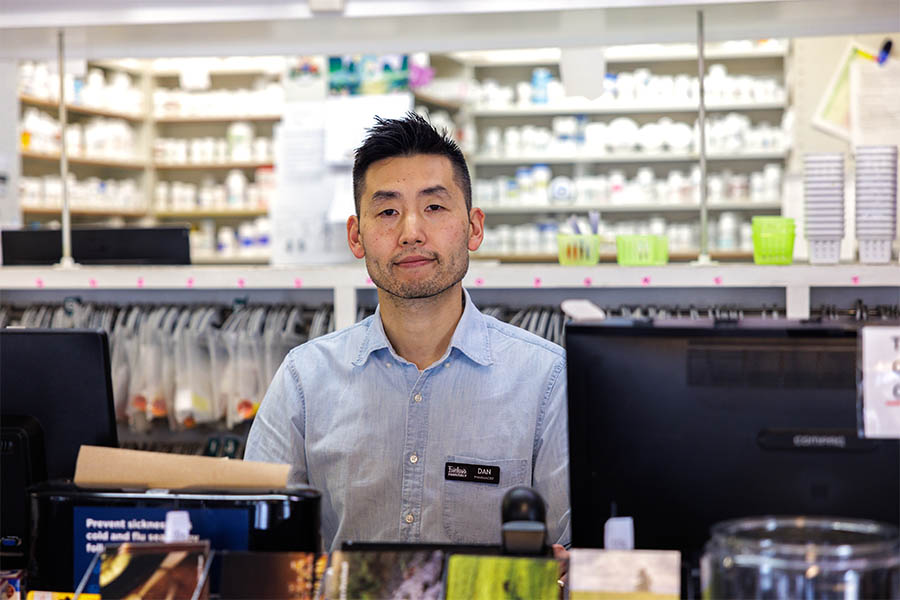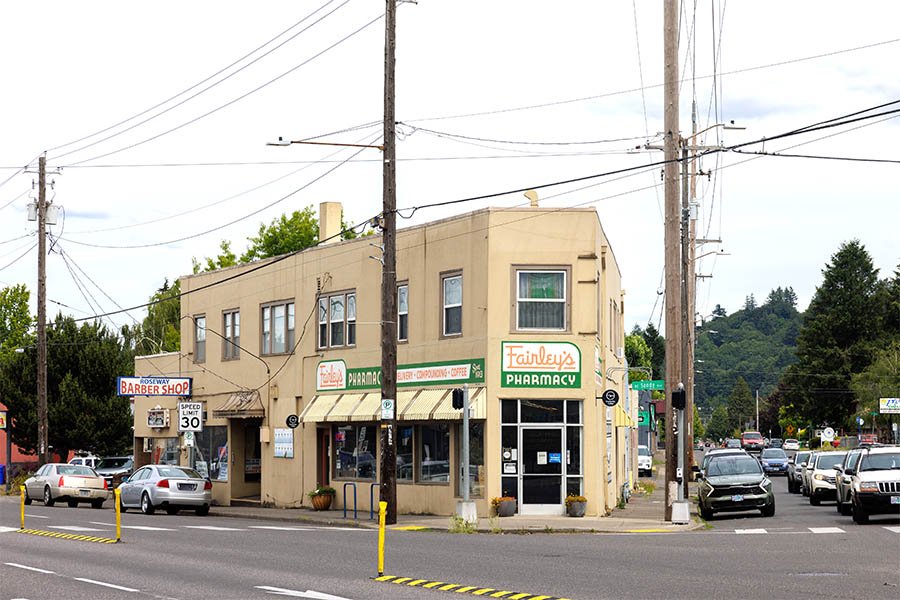Open for 100+ years, Fairley’s Pharmacy in Roselawn is one of the few hanging on.
The fountain counter at Fairley’s Pharmacy still serves phosphate soda and milkshakes but increasingly, this independent drugstore, which opened in 1913 at the same location in the Roseway neighborhood, dispenses something more important.
In addition to medicine, Fairley’s has become a trusted source for care, and a front line in public health, according to Daniel Lee, who took over as owner — the store’s fifth — in 2020. But due to factors like telehealth, retail theft and declining insurance reimbursements, small, independent pharmacies around the country like Fairley’s are closing a faster clip than ever. The problem is especially acute in Oregon, which ranked near the bottom for access to pharmacies.
“I really hope things turn around because it’s been a rough few years,” Lee says.

The decline of small pharmacies in Oregon and elsewhere was the subject of recent pieces by Oregon Public Broadcasting, The Associated Press and The Oregonian.
Across the U.S., more than 7,000 pharmacies have closed since 2019. In Oregon, 35 closed last year. I’s not just the small pharmacies. After a period of growth prior to the pandemic, national chains CVS Health, Walgreens, Rite Aid have pulled back, in some cases, considerably. The fall of pharmacies has been hastened by the proliferation of drugstore chains, high fees charged by intermediaries and lowered reimbursements as an unintended consequence of the Affordable Care Act.
“It has become a volume game,” Lee says. “The amount that we earn from each scrip is now very, very low. And the only way to make up for it is by filling a large volume. But at the same time, a lot of pharmacies are incentivized to cut costs as low as possible.”
This push leads to greater demands on staff and, subsequently, employee burnout. And training a constant stream of new faces isn’t cheap either, Lee says.
These trends are occurring as local drugstores have become more important care sources for people with difficulty accessing a doctor, like those who work two jobs, notably immigrants. And because pharmacists often see customer more frequently than the customers’ doctors, they’re commonly the first to notice signs of diseases like Parkinson’s and Alzheimer’s.
Large chains like Walgreens and CVS host health clinics for patients and offer more than a dozen vaccines. AP reports that pharmacists increasingly counsel patients on managing health conditions like high blood pressure and diabetes.
An AP analysis of nationwide licensing data found the closures could also be fueling economic inequality. Residents of Black and Latino neighborhoods have fewer pharmacies per capita than residents of mostly white neighborhoods. Oregon ranks close to the bottom in number of pharmacies (about two-thirds of the state’s pharmacies owned by chains). Fewer small pharmacies may also contribute to the urban-rural divide as independent pharmacies are more likely to be concentrated in urban areas and in states with larger populations.
Helping it stay afloat, Fairley’s has diversified. In addition to traditional retail pharmacy, the store features a lab where it makes compounded medications that are tailored to a customer’s pharmaceutical needs. Another side of the business is as a so-called closed-door pharmacy, providing long-term care for people who in care facilities. Larger chains generally don’t offer either service, Lee says.
Some pharmacies are experimenting with a cash-based model so as to not deal with insurance.
“I definitely see the draw there,” Lee says. “But for us, customer service is really important, so we’ve resisted as much as possible.”

Today, shops like Fairley’s are often an ailing patient’s first stop, helping with a wide range of issues from suicide prevention to smoking cessation.
Lee and other independent pharmacies point a lot blame to a type of third-party healthcare intermediaries called pharmacy benefit managers, who benefit from the current arrangements as drugstores cut costs. The largest of these include CVS Caremark, Express Scripts and OptumRX.
“I think we need to look at where the money is going,” Lee says. “(PBMs) are making record breaking profits every year, whereas a lot of pharmacies are going out of business.”
“It’s almost a David vs. Goliath situation.”
Click here to subscribe to Oregon Business.




